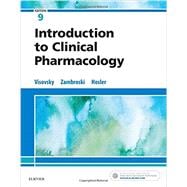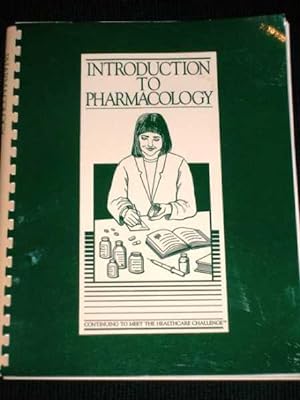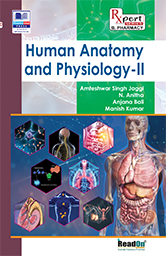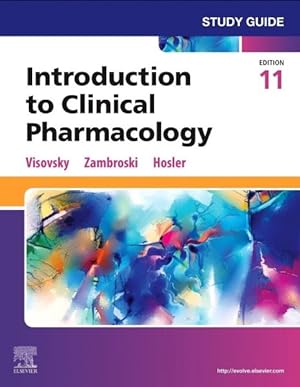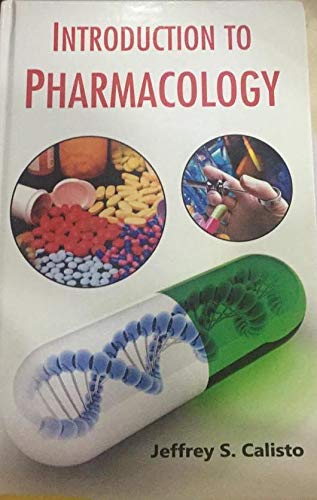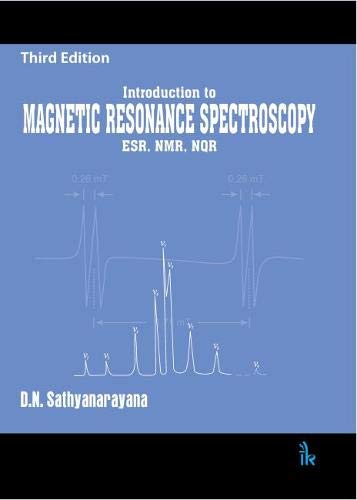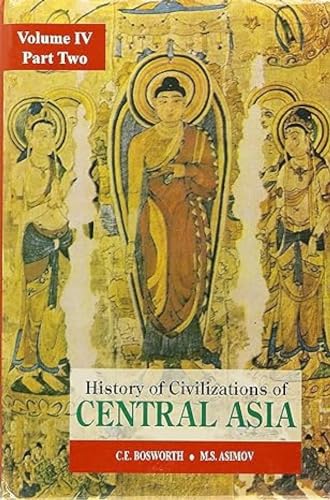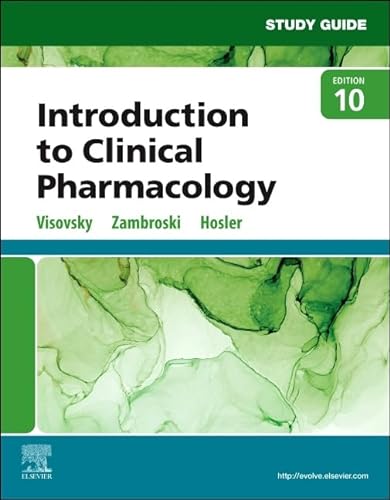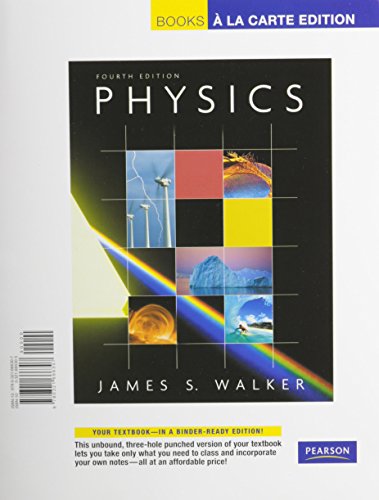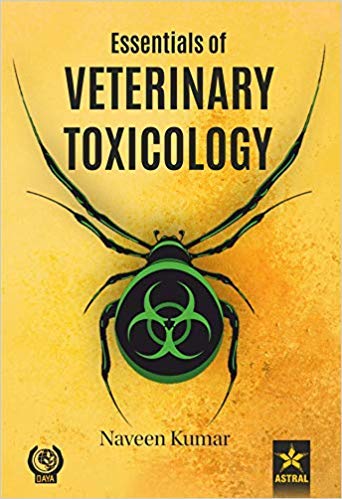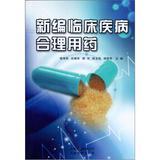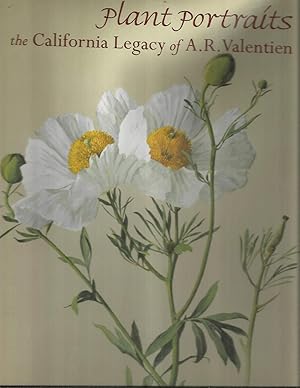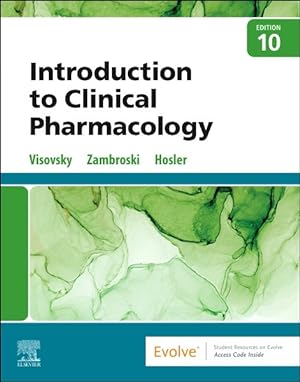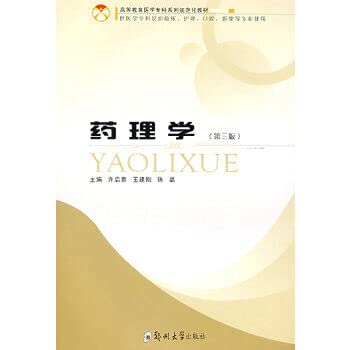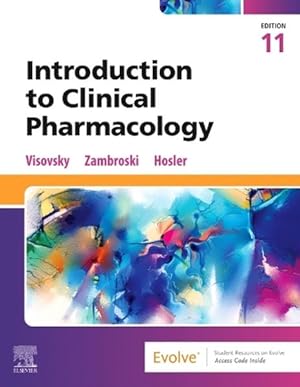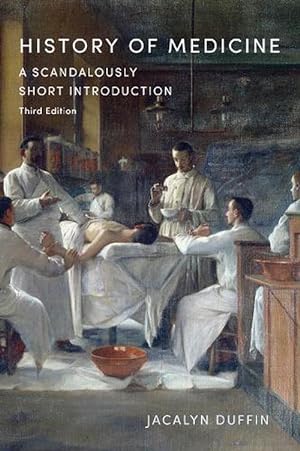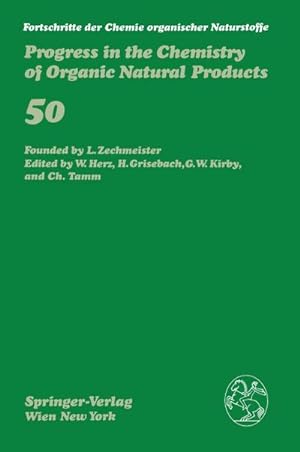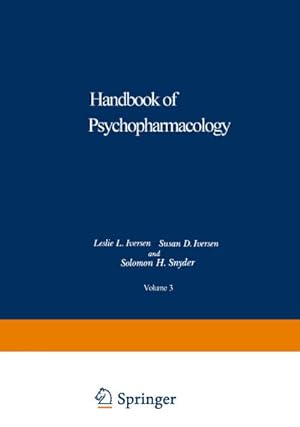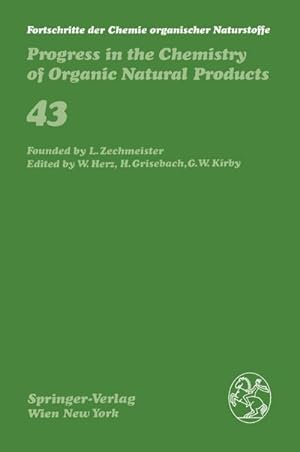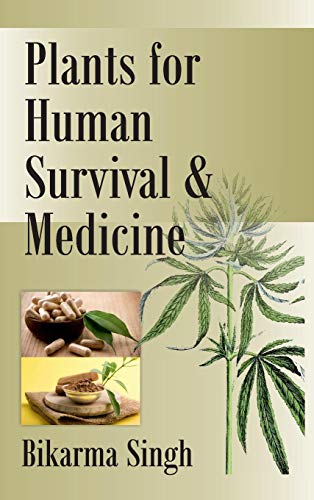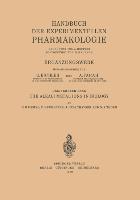Introduction to Pharmacology N a (97 results)
Product Type
- All Product Types
- Books (97)
- Magazines & Periodicals
- Comics
- Sheet Music
- Art, Prints & Posters
- Photographs
- Maps
-
Manuscripts &
Paper Collectibles
Condition
Binding
Collectible Attributes
Free Shipping
Seller Location
Seller Rating
-
Introduction to Clinical Pharmacology
Published by Mosby, 2018
ISBN 10: 0323529119ISBN 13: 9780323529112
Seller: eCampus, Lexington, KY, U.S.A.
Book
Condition: Very Good.
-
Introduction to Pharmacology
Published by Certified Medical Representatives Institute, Roanoke, VA, 1991
Seller: Lotzabooks, Oak Point, TX, U.S.A.
Spiral Binding. Condition: Very Good. 165pp; This is a course book for "Introduction to Pharmacology". It includes lots of valuable information, as well as progress checks along the way; It shows a little shelfwear (curling and wrinkling), but the pages are tight and clean, with no markings; Please note that this was published in 1991, and may not be a current book, yet would be very beneficial to those wanting to brush up or learn the basics of Pharmacology without enrolling in the full course; Size: 4to - over 9¾" - 12" tall. Quantity Available: 1. Shipped Weight: 1 - 2 pounds. Category: Medicine & Health; Pictures of this item not already displayed here available upon request. Inventory No: 102947.
-
Introduction To Pharmacology
Published by CBS, 2019
ISBN 10: 938591555XISBN 13: 9789385915550
Seller: Books in my Basket, New Delhi, India
Book
N.A. Condition: New. ISBN:9789385915550.
-
Human Anatomy and Physiology - II
Published by PharmaMed Press / BSP Books, 2023
ISBN 10: 9395039302ISBN 13: 9789395039307
Seller: Vedams eBooks (P) Ltd, New Delhi, India
Book
Soft cover. Condition: New. Contents: 1. Nervous Tissue. 2. Central Nervous system. 3. Digestive System. 4. Energetics. 5. Respiratory System. 6. Urinary System. 7. Endocrine System. 8. Reproduction System. 9. Introduction to Genetics. Human Anatomy and Physiology are integral subjects in Pharmaceutical Science and strong knowledge about the structure and functions of human body organs is essential to understand the pathophysiology, and basic and clinical pharmacology. The present book attempts to clarify the basic aspects of human anatomy and physiology simply and lucidly. The book is written for B Pharmacy IInd Semester students as per the new syllabus drafted by the Pharmacy Council of India (PCI). · The important points related to that chapter have been added in the form of a chapter at glance . · special emphasis has been made to explain the structures of organs with appropriate figures. · A good number of tables have also been incorporated to summarize the key features of each chapter. · Review questions of two marks, five marks, and ten marks, and MCQs have been added, which will be very helpful to students as well as teachers.
-
Behavioral Pharmacology of 5-ht.
Published by Psychology Press, 1989
ISBN 10: 0805801359ISBN 13: 9780805801354
Seller: Kloof Booksellers & Scientia Verlag, Amsterdam, Netherlands
Book
Condition: very good. New York : Psychology Press, 1988. Hardcover. 527 pp. - Contents: Section I: A.R. Cools, Introduction. A.R. Green, Behavioural Pharmacology of 5-HT: An Introduction. T.P. Blackburn, D.A. Martin, P. Slater, Is Rotational Behaviour in the Rat a 5-HT1A or 5-HT1B Mediated Response? A.J. Stoessl, C.T. Dourish, S.D. Iversen, Serotonic Mediated Behaviour Following Central or Peripheral Administration of the Selective NK-3 Tachykinin Agonist Senktide. Section II: P. Bevan, 5-HT and Sexual Behavior. S. Ahlenius, K. Larsson, New Aspects on the Serotonergic Modulation of Male Rat Sexual Behaviour. S.D. Mendelson, B.B. Gorzalka, Differential Roles of 5-HT Receptor Subtypes in Female Sexual Behaviour. M.D. James, S.M. Lane, D.R. Hole, C.A. Wilson, Hypothalamic Sites of Action of the Dual Effect of 5-HT on Female Sexual Behaviour in the Rat. L. R nyi, T. Lewander, 5-HT1A and 5-HT1B Agonists Produce Opposite Effects on the Ejaculatory Response Induced by Amphetamine in Rats. H.H.G. Berendsen, R.J.M. Smets, C.L.E. Broekkamp, Functional Interplay of Serotonin(5-HT)-Receptor Subtypes. Section III: P. Bevan, 5-HT and Aggression. B. Olivier, J. Mos, M. Tulp, J. Schipper, P. Bevan, Modulatory Action of Serotonin in Aggressive Behaviour. K.A. Miczek, P. Donat, Brain 5-HT System and Inhibition of Aggressive Behaviour. D.C. Blanchard, K. Hori, R.J. Rodgers, C.A. Hendrie, R.J. Blanchard, Differential Effects of Benzodiazepines and 5-HT1A Agonists on Defensive Patterns in Wild Rattus. C. Gentsch, M. Lichtsteiner, H. Feer, Competition for Sucrose-Pellets in Triads of Male, Wistar Rats, the Effects of Eight 5-HT- Agonists. Section IV: A.R. Cools, Depression and Psychosis. P. Willner, Towards a Theory of Serotonergic Dysfunction in Depression. J.F.W. Deakin, 5-HT Receptor Subtypes in Depression. J.A.M. van der Heyden, Modulation of the 5-HT System and Antipsychotic Activity. G.A. Kennet, G. Curzon, Mechanism of Action of 8-OH-DPAT on a Rat Model for Human Depression. P. Martin, A.M. Laporte, P. Soubrie, E. El Mestikawy, M. Hamon, Reversal of Helpless Behaviour in Rats by Serotonin Uptake Inhibitors. T.F. Meert, C.J.E. Niemegeers, Y.G. Gelders, P.A.J. Janssen, Ritanserin (R 55 667), an Original Thymosthenic. N.M. Barnes, B. Costall, A.M. Domeney, M.E. Kelly, R.J. Naylor, M.B. Tyers, The Abilities of 5-HT3 Antagonists to Inhibit the Hyperreactivity Caused by Dopamine Infusion into the Nucleus Accumbens of the Rat. M.A. Geyer, 5-HT2 Antagonists Increase Tactile Startle Habituation in an Animal Model of a Habituation Deficit in Schizophrenia. Section V: A.R. Cools, Feeding Behaviour. E. Goodall, T. Silverstone, Pharmacological Evidence for the Involvement of Serotonergic Mechanisms in Human Feeding. R. Samanin, Serotonin and Feeding. P.H. Hutson, G.A. Kennett, T.P. Donohoe, C.T. Dourish, G. Curzon, Opposite Effects of 5-HT1A and 5-HT1B/1C agonists on Food Intake. J.D. Leander, Effects of Selective Serotonergic Agonists on Palatability-Induced Ingestion. A.M.J. Montgomery, P. Willner, R. Muscat, 8-OH-DPAT Reliably Increases Ingestio Condition : very good copy. ISBN 9780805801354. Keywords : PSYCHOLOGY, Serotonin.
-
Introduction to Clinical Pharmacology
Published by Mosby, 2024
ISBN 10: 0443115028ISBN 13: 9780443115028
Seller: GreatBookPrices, Columbia, MD, U.S.A.
Book
Condition: New.
More buying choices from other sellers on AbeBooks
New offers from US$ 42.48
Used offers from US$ 47.28
Also find Softcover
-
Introduction to Pharmacology
Published by Agrotech Press, 2019
ISBN 10: 9387160262ISBN 13: 9789387160262
Seller: Books in my Basket, New Delhi, India
Book
N.A. Condition: New. ISBN: 9789387160262, 336pp.
-
Introduction to Magnetic Resonance Spectroscopy ESR, NMR, NQR, 3/e
Published by I.K International Publishing House, 2020
ISBN 10: 9386768925ISBN 13: 9789386768926
Seller: Vedams eBooks (P) Ltd, New Delhi, India
Book
Soft cover. Condition: New. This book brings together the three branches of magnetic resonance spectroscopy namely, electron spin resonance (ESR), nuclear magnetic resonance (NMR) and nuclear quadrupole resonance (NQR) and presents a coherent and progressive coverage of the subject in a simple and lucid style. Each part covers the physical basis of a spectroscopic method and its chemical applications. The emphasis is on obtaining and interpreting some types of spectra often met in solving problems related to structure and behaviour of organic and inorganic molecules. Each part concludes with references to advanced literature and exercises that test the readers' understanding. This text may be used for self study. The text will benefit students at M.Sc., M.Phil. and research levels in chemistry, physics, biology and pharmacology.
-
History of Civilizations of Central Asia : Vol: IV, The Age of Achievement : A.D. 750 to the End of the Fifteenth Century, Part II
Published by Motilal, 2003
ISBN 10: 8120815963ISBN 13: 9788120815964
Seller: Vedams eBooks (P) Ltd, New Delhi, India
Book
Hardcover. Condition: Fine. Dust Jacket Included. Contents: Description of the project/M.S. Asimov. Introduction/C.E. Bosworth. I. The development of education: maktab madrasa science and pedagogy: 1. The Islamic lands and their culture/A.K. Mirbabaev. 2. The search for knowledge through translation: translations of Manichaean Christian and Buddhist literature into Chinese Turkic Mongolian Tibetan and other languages/P. Zieme. 3. Early Buddhism in Tibet and the educational role of the monasteries/Wang Furen. II. Religions and religious movements: Introduction/H.J. Klimkeit. 1. Religions in the Central Asian environment/R. Meserve. 2. Manichaeism and Nestorian Christianity/H.J. Klimkeit. 3. The advent of Islam: extent and impact/E.E. Karimov. 4. Non Islamic mystic movements in Hindu society/C. Shackle. III. Works on hadith and its codification on exegesis and on theology: 1. The contribution of eastern Iranian and Central Asian scholars to the compilation of hadiths/A. Paket Chy. 2. Qur'anic exegesis/C. Gilliot. IV. Legal political and historical sciences: 1. Legal and political sciences in the eastern Iranian world and Central Asia in the pre Mongol period/C.E. Bosworth. 2. Arabic Persian and Turkish historiography in the eastern Iranian world/C.E. Bosworth. 3. Arabic Persian and Turkish historiography in Central Asia/R.N. Frye. 4. Historiography among the Mongols/Sh. Bira. V. Philosophy logic and cosmology/M. Dinorshoev. VI. Mathematical sciences: 1. Introduction: the mathematicians and their heritage/Q. Mushtaq. 2. The mathematical sciences/J.L. Berggren. VII. Astronomy astrology observatories and calendars/A. Akhmedov. VIII. Geodesy geology and mineralogy geography and cartography the silk route across Central Asia: 1. Geodesy geology and mineralogy. Geography and cartography/S. Maqbul Admad. 2. The silk route across Central Asia/K. Baipakov. IX. Alchemy chemistry pharmacology and pharmaceutics: 1. Alchemy and chemistry in Islamic Central Asia/A. Abdurazakov. 2. Tibetan and Mongolian pharmacology/Ts. Haidav. X. Physics and mechanics. Civil and hydraulic engineering. Industrial processes and manufacturing and craft activities/D.R. Hill. XI. Natural life and the manmade habitat in Central Asia/A.R. Mukhamejanov. XII. Medical and veterinary sciences: 1. Medicine pharmacology and veterinary science in Islamic eastern Iran and Central Asia/L. Richter Bernburg. 2. Medicine and pharmacology: Chinese Indian Tibetan and Graeco Arab influences/H.M. Said. XIII. Language situation and scripts: 1. Iranian languages/A. Tafazzoli. 2. Old Turkic and middle Turkic languages/D. Sinor. 3. Pre Mongol and Mongol writing systems/G. Kara. 4. The Tibetan script/G. Kara. 5. Arabic/S. Blair. XIV. The linguistic sciences: 1. Lexicography/V.A. Kapranov. 2. Encyclopedias/Z. Vesel. XV. Oral tradition and the literary heritage: 1. Persian literature/A. Afsahzod. 2. Literature of the Turkic peoples/A. Kayumov. 3. Tibetan and Mongolian literature/G. Kara. 4. The literatures of north western India/C. Shackle. 5. The Kyrgyz epic Manas/R.Z. Kydyrbaeva. XVI. Arts and crafts: 1. Arts and crafts in Transoxania and Khurasan/A.A. Hakimov. 2. Turkic and Mongol art/E. Novgorodova. 3. Hindu and Buddhist arts and crafts: tiles ceramics and pottery/A.H. Dani. XVII. Arts of the book and painting: 1. Arts of the book and miniatures/M.M. Ashrafi. 2. The development of calligraphy/P. Soucek. XVIII. Urban development and architecture: 1. Transoxania and Khurasan/G.A. Pugachenkova. 2. Southern Central Asia/A.H. Dani. 3. Eastern Central Asia/Liu Yingsheng. XIX. Music and musicology theatre and dance: 1. Music in the Buddhist and pre Buddhist worlds/B. Lawergren. 2. Music in the Islamic environment/E. Neubaucer. 3. Festivals drama and the performing arts in Khurasan and Transoxania/M.H. Kadyrov. Conclusion/C.E. Bosworth. Bibliography and references. Glossary. Index. Volume IV Part One of this History covered the dynastic political and military history of Central Asia. Part Two covers the cultural achievements of the various p.
-
Ethnobotany of Totopara
Published by BSMPS, 1999
ISBN 10: 8121101786ISBN 13: 9788121101783
Seller: Vedams eBooks (P) Ltd, New Delhi, India
Book
Hardcover. Condition: New. Contents: I. Introduction. 1. Previous works. 2. Historical background. 3. Habitat. 4. Physical feature. 5. Language. 6. Demographic profile. 7. Culture. 8. Social life. 9. Education. 10. Agriculture. 11. Food habit. 12.Economy and trade practices. 13. Religious and magico-religious belief. 14 . Taboo and Totems/conservation practice. 15. Common diseases among the Totos. 16. Attitude towards disease and treatment. 17. Toto pharmacology. II. Account of ethnobotanical uses. Appendix: 1. Terms describing therapeutic properties. 2. Index to uses. 3. Index to local names with corresponding botanical names. 4. Index to families. Reference. From the introduction: "Ethnobotany of Totopara" is a descriptive ethnomedicinal account of a very small Mongoloid tribe known as "Toto". The Totos are living in Totopara which is situated in the extreme north-east part of Jalpaiguri district in West Bengal. The authors took extensive field studies during 1995 to 1997 at Totopara and the present account is the outcome of those field studies. Until a few years ago, the Totos were unknown to the outside world. They used to hold their indigenous culture. Now-a-days some of these tribal people have undergone minor changes in their livelihood and culture. In this present account, some plants used in medicine and other purposes by this tribal community, have been discussed which may help the readers to get an idea about the plant species used by this tribal community to prevent and cure their illness. Moreover, the studies unfolded the similarities of usages of plant species between the.
-
Study Guide: Introduction to Clinical Pharmacology
Published by Mosby Inc, 2021
ISBN 10: 0323761224ISBN 13: 9780323761222
Seller: Revaluation Books, Exeter, United Kingdom
Book
Paperback. Condition: Brand New. 10 csm study guide edition. 134 pages. 10.75x8.50x0.50 inches. In Stock.
-
By the side of Pharmacy and Pharmacology. Clinical Guide (New Year special bargain pricing 18.80. the lowest)(Chinese Edition)
Seller: liu xing, Nanjing JiangSu, JS, China
paperback. Condition: New. Ship out in 2 business day, And Fast shipping, Free Tracking number will be provided after the shipment.Pub Date: 1999 Publisher: ancient Chinese medicine. the number of words: 317000 Thousand Revision: 1 Basic information title: by the square of Pharmacy and Pharmacology. Clinical Guide List Price: 18.8 yuan Author: the Wang Fu Press: Ancient Chinese medicine Publication Date :1999-9-1ISBN : 7800138526 Words: 317.000 yards: 438 Edition: 1 Binding: Paperback: Product ID: Editor's Choice \ t \ t \ t \ t 'Executive Summary typhoid miscellaneous disease rate of the party. precisely because of its compatibility. medication deep The remarkable efficacy. so called side by side. By the party has been able to is repeatedly inter illness. lies Prescription medication can identify the medicinal truth. this greatly smell widowed see and effort. Book Zhongjing Group Prescription basic points. in-depth and detailed analysis of the Chinese medicine expertise. analysis of medicinal not leave the party. party healing based on the square and analysis of medicinal. explore and explains the medicinal properties make Chung The true meaning of King medication can be learned for everyone. \ T \ t 'the Contents Introduction drug the On A folic artemisiae B croton white powder liquor the white-grabbing white before Whitehead fat bald Wengbai Wei whitefish Atractylodes Lily Bo defeat real Kashiwaba. the sauce the Pinellia Fritillaria Biejia C Bupleurum Chishi Zhi Chixiaodou deficit nitrate light blue D Euphorbia barley jujube the rhubarb ruddle Angelica beans yellow the Volume E Ejiao F ettringite windproof Menispermaceae powder honeycomb was the Ling aconite G H J L M P Q R S W X Y Z 'Author \ t \ t \ n' Digest No In Media \ t \ t \ n 'Four Satisfaction guaranteed,or money back.
-
Voltage-Gated Ion Channels as Drug Targets (Methods and Principles in Medicinal Chemistry)
Published by Wiley, 2006
ISBN 10: 3527312587ISBN 13: 9783527312580
Seller: killarneybooks, Inagh, CLARE, Ireland
Book First Edition
Hardcover. Condition: Very Good. 1st Edition. Hardcover, xii + 479 pages, NOT ex-library. Printed in Germany (not an economy edition). Signs of minor wear, book is clean, with unmarked text, free of inscriptions and stamps, firmly bound. Issued without a dust jacket. Weight over 1kg (please note: extra shipping will be required). -- Contents: 1 Introduction: On Ion Channels 2 Voltage-gated Ion Channel Superfamily [Voltage-gated Sodium Channels; Voltage-gated Calcium Channels; Voltage-gated Potassium Channels; Inwardly Rectifying Potassium Channels; Common Aspects of Ion Channel Structure and Function]; 3 State-dependent Drug Interactions with Ion Channels [Ion Channels as Drug Receptors; Ion Channels Adopt Multiple Conformations; Biophysics Meets Pharmacology: State Dependence, Voltage Dependence, and the Modulated Receptor Model; Use Dependence; Physical Meaning of State Dependence; State Dependence in Drug Discovery; Future Directions for Ion Channel Drug Discovery]; 4 Assay Technologies: Techniques Available for Quantifying Drug?Channel Interactions [Patch Clamp; Planar Patch Clamp; Two-electrode Voltage Clamp (TEVC) of Xenopus Oocytes; Membrane Potential Sensing Dyes; Binding; Ion Flux; What Technologies Cannot be Used . Yet?]; 5 Calcium Channels [Overview of Voltage-gated Calcium Channels; Drugs Active at T-type Ca2+ Channels; L-type Calcium Channels; N-type Calcium Channels]; 6 Sodium Channels [Molecular, Biophysical and Functional Properties of Voltage-gated Sodium Channels; Small Molecule Blockers of Voltage-gated Sodium Channels]; 7 Potassium Channels [Potassium Channels: Overview of Molecular, Biophysical and Pharmacological Properties; Kv1.3 Potassium Channel: Physiology, Pharmacology and Therapeutic Indications; Drugs Active at Kv1.5 Potassium Channels; Medicinal Chemistry of Ca2+-activated K+ Channel Modulators; Drugs Active at ATP-sensitive K+ Channels; Compounds that Activate KCNQ(2?5) Family of Potassium Ion Channels]; 8 Genetic and Acquired Channelopathies [Inherited Disorders of Ion Channels; Structural and Ligand-based Models for HERG and their Application in Medicinal Chemistry; Ion Channel Safety Issues in Drug Development]; Index -- Edited by the most prominent person in the field and top researchers at US pharmaceutical companies, this is a unique resource for drug developers and physiologists seeking a molecular-level understanding of ion channel pharmacology. After an introduction to the topic, the authors evaluate the structure and function of ion channels, as well as related drug interaction. A section on assay technologies is followed by a section each on calcium, sodium and potassium channels. Further chapters cover genetic and acquired channelopathies, before the book closes with a look at safety issues in ion channel drug development. For medicinal and pharmaceutical chemists, biochemists, molecular biologists and those working in the pharmaceutical industry.
-
Essentials of Veterinary Toxicology
Published by Daya Publishing House, 2019
ISBN 10: 9388173503ISBN 13: 9789388173506
Seller: Vedams eBooks (P) Ltd, New Delhi, India
Book First Edition
Hardcover. Condition: New. 1st Edition. Contents: Foreword. Preface. 1. Veterinary Toxicology: An Introduction to the Discipline/Naveen Kumar. 2. Toxicity of Agrochemicals/Amita Ranjan and Rakesh Ranjan. 3. Toxicology of Mineral Elements Toxicology of Metals/Naveen Kumar and Disha Pant. 4. Toxicology of Non-Metals/Ratn Deep Singh and Hitesh B. Patel. 5. Residue Toxicology/R.D. Singh and V.N. Sarvaiya. 6. Zootoxins/Vikas Karande and Ashali Karande. 7. Photosensitization and Lathyrism/Jeevan Ranjan Dash. 8. Radiation Hazard and Toxicity/Tariq Ahmad Wani and Naveen Kumar. 9. Plant Toxicology/Rajeev Ranjan and Naveen Kumar. 10. Plant Toxicity: Lantana/Rajeev Ranjan and T.J. Sheikh, Bracken Fern/Nrip Kishore Pankaj. 11. Castor Bean/Nrip Kishore Pankaj and Shahid Prawez. 12. Cyanogenic Plants/Nrip Kishore Pankaj and Dhirendra Kumar Abrus Nrip Kishore Pankaj and Rajinder Raina. 13. Strychnine/Nrip Kishore Pankaj and Ramesh K. Nirala. 14. Cotton Seed/Nrip Kishore Pankaj and Nirbhay Kumar. 15. Nitrate and Nitrite/Nrip Kishore Pankaj and Shahid Prawez Ipomoea Nrip Kishore Pankaj and Pawan K. Verma Kaner Nrip Kishore Pankaj and Rajinder Raina Datura, Nrip Kishore Pankaj and Ramesh K. Nirala. 10. Oxalate Containing Plants/Kasturi Devi, Vijeyta Tiwari and Swatantra K. Singh. 11. Mycotoxins/Rajeev Kumar, A.P. Suthar and C.V. Savalia. 12. Food and Feed Additives/Rajeev Ranjan and Pavan Kumar. Index. The present book is spread over in twelve chapters viz. veterinary toxicology: an introduction, toxicity of agrochemicals, toxicology of mineral elements, toxicology of metals, toxicology of non-metals, residue toxicology, zootoxins, photosensitization and lathyrism, radiation hazard and toxicity, plant toxicology, plant toxicity, oxalate containing plants, mycotoxins, food and feed additives. This book has been prepared according to the latest syllabus approved by VCI for B.V.Sc. A.H. degree programme. This is a valuable source for students of veterinary pharmacology and toxicology, teachers, veterinary professionals, veterinary practitioners and also useful for the aspirants of NET/ARS and other allied examinations. (jacket).
-
New clinical disease rational drug use(Chinese Edition)
Published by Yunnan Science and Technology Press, 2012
ISBN 10: 7541661007ISBN 13: 9787541661006
Seller: liu xing, Nanjing JiangSu, JS, China
Book
paperback. Condition: New. Ship out in 2 business day, And Fast shipping, Free Tracking number will be provided after the shipment.Paperback. Pub Date :2012-05-01 Pages: 278 Publisher: Yunnan Science and Technology Publishing House New clinical disease rational drug use . mainly in pharmacology and clinical pharmacy experience . and consult the major domestic and foreign literature on clinical drug treatment diseases were highlighted narrative . Treatment of diseases in which both the latest introduction. has its exhaustive clinical trials . And strive to achieve increased levels of drug treatment of clinical disease . N.Four Satisfaction guaranteed,or money back.
-
PLANT PORTRAITS : The California Legacy of A. R. Valentien. With Introductions By Joan Irvine Smith & Michael W. Hager.
Published by Irvine CA. 2003. Sand Diego Natural History Museum., 2003
ISBN 10: 0971409250ISBN 13: 9780971409255
Seller: Chris Fessler, Bookseller, Howell, MI, U.S.A.
Book First Edition
large red & gilt lettered cloth hardbound folio ~ 2º. very large ("coffee table" size book), international or priority shipping will cost extra. dustwrapper in protective plastic book jacket cover. very fine cond. looks new. like new. as new. binding square & tight. covers clean. edges clean. contents free of all markings. dustwrapper in fine cond. not worn or torn or price clipped(no price listed). nice clean copy. no library markings, store stamps, stickers, bookplates, no names, inking , underlining, remainder markings etc ~ first edition. first printing ( nap). ~ Please Note: book is larger than scanner so the photos are a bit cropped. Published on the occasion of the exhibit ~ PLANT PORTRAITS : The California Legacy of A. R. Valentien. full color illustrated ½ title, frontis. & title pg. 212p. glossy pages throughout. 325 glossy color illustrations. 10 b&w illustrations. appendix with bibliography & notes on the plates giving scientific names of specimens. index. art history. biology. botany. wild flowers. herbology. natural science. ecology. environmentalism. pharmacology. conservationism. ~ In 1908, artist Albert R. Valentien (1862~ 1925) accepted a commission from San Diego philanthropist Ellen Browning Scripps to paint a series of California wildflowers. What began as an ambitious project soon became his life's passion, as he spent the next ten years traveling throughout the state, diligently painting every specimen of California plant and wildflower that could be gathered. While Valentien was not trained as a botanist, his illustrations display remarkable accuracy and detail as well as a wonderful sense of freshness and spontaneity. He strived for veracity in representation, never attempting to "prettify" a specimen. In all, he completed 1,094 delicate watercolors, covering nearly 1,500 species of California flora~including many plants that are now extremely rare. The Valentien watercolor collection has been a treasured part of the San Diego Natural History Museum's holdings since 1933, when they were donated to the Museum Library by the Scripps estate. In 2000, thanks to the commitment and generosity of Eleanor and Jerome Navarra, the Valentien Project~which entailed photographing, conserving, cataloging, and eventually exhibiting the collection~began. Plant Portraits marks the first time that Valentien's crowning achievement, begun more than 95 years ago, has been realized in print. The San Diego Natural History Museum is proud to join with The Irvine Museum in presenting these vibrant illustrations from Valentien's incomparable flora of California series.
-
Haza'inu's-saa'dat. 1460 (H. 864). Edited by Bedi N. Sehsuvaroglu.
Published by Ankara: TTK, 1961., Ankara:, 1961
Seller: BOSPHORUS BOOKS, Istanbul, Turkey
Book
Hardcover. Condition: Very Good. ESREF BIN MUHAMMED Haza'inu's-saa'dat. 1460 (H. 864). Edited by Bedi N. Sehsuvaroglu. Ankara: TTK, 1961. Large 8vo., xiv, 107 p.; lxxii plates facsimile in Ottoman script. Introduction in Turkish, French and English. On Ottoman-Turkish medicine. Original binding. Very good ISBN: CATALOG: Medical & Pharmacology - Health & Fitness KEYWORDS: Medicine health Pharmacy History of science.
-
National secondary vocational education Eleventh Five-Year education reform planning materials: Drug Application of Nursing(Chinese Edition)
Published by China Science and Technology Press, 2000
ISBN 10: 750465244XISBN 13: 9787504652447
Seller: liu xing, Nanjing JiangSu, JS, China
Book
paperback. Condition: New. Ship out in 2 business day, And Fast shipping, Free Tracking number will be provided after the shipment.Paperback. Pub Date: 2008 08 Pages: 327 Language: Chinese in Publisher: China Science and Technology Press National secondary health vocational education Eleventh Five-Year education reform planning materials: drug application care highlighted skills training . not only systematically introduce the commonly used drugs in vivo process. role. application. adverse reactions. etc. and for professional features to increase medication care content. and in the dual core training by case analysis to strengthen the skills training. highlighting the characteristics of this textbook of . According to the current situation of the development of new drugs also increased the number of new drugs and new perspectives. Eleventh Five-Year education reform secondary vocational education planning materials: drug application care adding some in the theoretical description of the process in a timely manner is both interesting and informative knowledge expansion to increase students' desire to read and interest in learning broaden students' horizons. National secondary vocational education Eleventh Five education reform planning materials: pharmaceutical care applies to secondary vocational schools nursing profession. the foreign nursing. midwifery and other related medical and health professional use. Contents: Introduction Section I Overview Chapter Drug Application care drugs and drug application care concept. learning Drug Application care. medication care attention issues. drugs and pharmacology brief history of Section II drug effect dynamics - pharmacodynamics of a drug action and drug effects. drug mechanism of action of the third quarter pharmacokinetic - pharmacokinetics of a drug in vivo process of drugs in the body over time change the law of the fourth quarter of the factors that affect drug action. drug factors. body factors efferent system drugs Section 1 Overview efferent system classification two efferent neurotransmitter in vivo process Third. the the efferent nerve receptors type. distribution and physiological effects of IV Section II of the mode of action of the drug and the classification of the efferent system cholinergic drugs cholinergic receptor agonists. cholinesterase inhibitors first three anticholinergics. M receptor blockers II. the N-blockers III. Section IV of the cholinesterase resurrection drug proposed drug epinephrine. . -receptor agonist receptor agonists receptor agonist Section V anti-adrenergic drugs alpha receptor blockers. beta-receptor blocking drug Chapter local anesthetics overview the Chapter hub of the commonly used local anesthetic nervous system drugs the first section sedative hypnotics. benzodiazepines. barbiturates Third. other types of Section II antiepileptic drugs commonly used anti-epileptic drugs. anti-epileptic drug application of the principle of the third quarter anti mental disorders drugs. antipsychotics. anti-mania drugs. antidepressants Section IV analgesics. opioid alkaloid medicines. synthetic products. other types of the Section V antipyretic analgesic anti-inflammatory drugs. commonly used antipyretic analgesics. antipyretic analgesics Section VI compound preparation central stimulant. the major excitatory brain cortex drugs. the major excitatory medullary respiratory center drug promote cardiovascular system drugs brain function recovery drug Chapter Section 1 antiarrhythmic drugs an arrhythmia electrophysiological basis of the fundamental role of the anti-arrhythmic drugs and drug classification. commonly used anti-arrhythmic drugs Section II Second. the commonly used anti-hypertensive drugs. other anti-hypertensive drugs four of anti-hypertensive drugs. anti-hypertensive drugs classification. antihypertensive drugs. the application of the principle of the third quarter against chronic ventricular dysfunction drug a cardiac glycosides class II renin - angiotensin - aldosterone.
-
Introduction to Clinical Pharmacology
Published by Mosby, 2021
ISBN 10: 0323755356ISBN 13: 9780323755351
Seller: GreatBookPrices, Columbia, MD, U.S.A.
Book
Condition: New.
More buying choices from other sellers on AbeBooks
New offers from US$ 86.91
Used offers from US$ 103.43
Also find Softcover
-
Screening Methods in Pharmacology (Vols 1 and 2 Set)
Published by Academic Press, 2009
Seller: Vedams eBooks (P) Ltd, New Delhi, India
Hardcover. Condition: As New. Dust Jacket Included. Contents Vol. I Preface. 1. Introduction. 2. A brief review of the biochemistry of the nervous system. 3. The organization of screening. 4. General methods. 5. Quantal responses. Calculation of the ED50. 6. Depressants of the central nervous system. 7. Ataractic (Tranquillizing Neuroleptic) agents. 8. Analgesics. 9. Oxytocic agents. 10. Antiserotonin agents. 11. Parasympatholytic agents. 12. Sympatholytic agents. 13. Anti inflammatory agents. 14. Anticonvulsants. 15. Sympathomimetic agents. 16. Central stimulants. 17. Muscaring agents. 18. Ganglion blocking agents. 19. Antifibrillatory agents. 20. Cardiotonic agents. 21. Histamine like agents. 22. Antihistamine agents. 23. Antitussive agents. 24. Antacid agents. 25. Thyromimetic agents. 26. Hypoglycemic agents. 27. Choleretic agents. 28. Antiparkinson agents. 29. Anti inflammatory and glucocorticoidal agents. 30. Antiemetic agents. 31. Bronchodilatant agents. 32. Curariform agents. 33. Anabolic Androgenic and Antiandrogenic agents. 34. Potentiators and antagonists of tryptamine. 35. Vasopressive peptides. 36. Diuretic and natriuretic agents. 37. Anticholinesterase agents. 38. Anticholesterol agents. 39. Uricosuric agents. 40. Antishock agents. 41. Hemostatic agents. 42. Local and spinal anesthetics. 43. Abortificient agents. 44. Thymoleptic agents. 45. Dermal irritants. 46. Teratogenic agents. Appendixes. References. Author index. Subject index. Vol. II 1. a Adrenergic blocking agents/V.C. Swamy. 2. b Adrenergic blocking agents/Robert A. Turner. 3. Agents acting on coronary blood vessels/R. Kadatz. 4. Agents with Kinin like activity/H.J. Wilkens and R. Steger. 5. Androgenic and anabolic agents/Peter Hebborn. 6. Estrogenic and antiestrogenic agents/Marian May. 7. Anovulatory agents/Marian May. 8. Progestational agents/Peter Hebborn. 9. Antihyperlipidemic agents/Jack N. Moss and Esam Z. Dajani. 10. Immunosuppressive agents/Robert L. Stone and Charles J. Paget. 11. Agents affecting Mucociliary Activity/Sam P. Battista. 12. Antiperspirant agents/Clyde M. Burnett. 13. Antidepressant agents/Allen Barnett and Robert I. Taber. 14. Agents with analgesic activity and dependence liability/Jerome M. Glassman. 15. Natriuretic and Antihypertensive agents screened by sequential methods/E. Gilliard P.R. Hedwall and K. Mullen. Author index. Subject index. From the Preface This book assembles most of the methods for screening substances for pharmacological activity and includes discussions of the organization of screening programs. While screening is widely practiced in pharmacology laboratories a definition of its meaning is perhaps worthy of attention. The term screening indicates the use of a combination of tests for the purpose of making a decision. The results of the tests provide information on the presence of certain pharmacological properties. The present work is obviously directed to those whose occupation it is to search for new pharmaceuticals. A variety of investigators in the fields of pharmacology physiology toxicology and therapeutics may also find useful methods for their research. Chemists in the pharmaceutical industry who read this book will be aided in their understanding of the basis for testing the compounds that they synthesize and in their understanding of the programs for testing that the pharmcologist has devised. 620 pp.
-
Pharmacology (3rd Edition) (Author :) (Pricing: 56.00) (Publisher: Zhengzhou University Press) (ISBN: 9787811068191)(Chinese Edition)
Published by Zhengzhou University (Henan Medical University) Press, 2000
ISBN 10: 7811068192ISBN 13: 9787811068191
Seller: liu xing, Nanjing JiangSu, JS, China
Book
paperback. Condition: New. Ship out in 2 business day, And Fast shipping, Free Tracking number will be provided after the shipment.Paperback. Pub Date: 2008 Pages: 429 Publisher: Basic information of Zhengzhou University Press title: Pharmacology (3rd Edition) List Price: 56.00 yuan Author: Publisher: Zhengzhou University Press Publication Date: August 1. 2008 ISBN : 9787811068191 words: Pages: 429 Edition: 3rd Edition Binding: Paperback: Editor's Choice Pharmacology (3rd Edition): The Higher Education Academy of Medicine series of standardized textbooks Executive Summary Pharmacology (3rd Edition) is based on revised and updated edition of the Higher Education Academy of Medicine teaching materials Committee on the guiding ideology of the new version of the textbook and medical professional training objectives. pharmacology. second edition (2003) for a full-time higher medical specialist. the new Vocational and Education students and other use. Table of Contents Chapter 1 Introduction. content and tasks of Pharmacology Second. the brief history of pharmacology. studies of new drugs and the first section of Chapter II clinical pharmacokinetic drug in the body. transit. absorbing three distribution metabolic five. excretion Section II pharmacokinetic parameters and significance. the concentration-time curve II compartment model bioavailability. apparent volume of distribution of V. the Drug Elimination six. the plasma half-life of seven. the fundamental role of the blood concentration of administered repeatedly drug effect dynamics change Chapter Section drug. the nature of the action of the drug. drug effects manner. the selectivity of drug action. and the action of the drug clinical effect the Section III drug dose and effect relationship of the structure-activity relationship of Section II drugs. the amount of a dose-response curves. the significance of the volume effect relationship Section IV drug mechanism of action. non-specific drug specific drugs Section V drugs with receptor v. the concept of receptor and ligand II. and the type of receptor and receptor-adjusting three affect the role of drugs and receptor factors. acting on receptor drug Category 5. the second messenger. Chapter IV important factors first section of the rational use of drugs. drug factors. dose and dosage form. time of administration. frequency and duration of treatment combination drug interactions section II body factors. age. gender. three genetic abnormalities circadian rhythm pathological state. mental factor VII. Section III of the body drug reactions rational drug use Chapter efferent principle Pharmacology Introduction Section I efferent system classification and sudden Touch of chemical transmission efferent system classification two synaptic chemical transmission the second efferent system receptor. the receptor classification II receptor distribution and effects of the generation mechanism of the effect of the three. receptor efferent system drugs section of the basic role and classification. the fundamental role of two of the the outgoing nervous system drugs. the outgoing nervous system drug classification of the sixth chapter of the role of cholinergic receptor drug first section cholinergic drugs The directly excited choline receptor drug indirectly excited cholinergic receptor drugs (anticholinesterase drug) Section II cholinergic receptor blocking drugs an M cholinergic receptor blockers. N choline by body blockers III. the cholinesterase resurrection drug Chapter VII role in adrenergic receptor the Drug Section I intend to adrenomimetics receptor agonist. . -receptor agonist. by agonists of Section II anti-adrenergic drugs. blockers. beta-receptor blocking drug Chapter VIII of the local anesthetic first section esters Section II amide Chapter General anesthetics first the combined anesthesia inhalation anesthetics second intravenous anesthetics Section III Chapter X sedative section hypnotics first section the Section II barbiturates III of the benzodiazepine.
-
Introduction to Clinical Pharmacology
Published by Mosby, 2024
ISBN 10: 044311336XISBN 13: 9780443113369
Seller: GreatBookPrices, Columbia, MD, U.S.A.
Book
Condition: New.
More buying choices from other sellers on AbeBooks
New offers from US$ 94.39
Used offers from US$ 107.66
Also find Softcover
-
History of Medicine (Paperback)
Published by University of Toronto Press, Toronto, 2021
ISBN 10: 1487509170ISBN 13: 9781487509170
Seller: CitiRetail, Stevenage, United Kingdom
Book
Paperback. Condition: new. Paperback. Jacalyn Duffin's History of Medicine is one of the leading texts used to teach the history of the medical profession. Emphasizing broad concepts rather than names and dates, it has also been widely appreciated by general readers for more than twenty years. Based on sound scholarship and meticulous research, History of Medicine incorporates pithy examples from a range of periods and places and is infused with the authors characteristic wit.The third edition has been completely revised to highlight new scholarship on the past and incorporate significant medical events of the most recent decade including new technologies, drug shortages, medical assistance in dying, and recent outbreaks of infectious diseases such as Ebola, H1N1, Zika, and COVID-19. The book is organized around themes of scientific and clinical interest, such as anatomy, physiology, pharmacology, surgery, obstetrics, medical education, health-care delivery, and public health. It includes a chapter on how to approach research in medical history, updated with new resources. History of Medicine is sensitive to the power of historical research to inform current health-care practice and enhance cultural understanding. The third edition of this bestselling introduction to medical history has been thoroughly updated to include recent scholarship and new events in major fields of medical endeavor. Shipping may be from our UK warehouse or from our Australian or US warehouses, depending on stock availability.
More buying choices from other sellers on AbeBooks
New offers from US$ 52.78
-
Fortschritte der Chemie organischer Naturstoffe / Progress in the Chemistry of Organic Natural Products
Published by Springer Vienna, 2012
ISBN 10: 3709188903ISBN 13: 9783709188903
Seller: AHA-BUCH GmbH, Einbeck, Germany
Book
Taschenbuch. Condition: Neu. Druck auf Anfrage Neuware - Printed after ordering - The Irones and Their Precursors.- I. Introduction.- II. Isolation and Structure Determination.- III. Structure of the Irone Precursors.- IV. Stereochemistry of the Iridals and the Irones Derived from Them.- V. Minor Triterpenoids in Iris Extracts.- VI. Biogenesis of the Iridals.- VII. Mechanism of Irone Ring Formation.- VIII. Biological Significance of the Compounds.- References.- The Condylocarpine Group of Indole Alkaloids.- 1. Introduction.- 2. Structures.- 2.1. Precondylocarpine.- 2.2. Condylocarpines.- 2.3. Dihydrocondylocarpines.- 2.4. Tubotaiwinal.- 2.5. Aspidospermatidines.- 2.6. 19,20-Dihydroaspidospermatine.- 2.7. Geissovelline.- 2.8. Dichotines.- 3. Isolation and Occurrence.- 3.1. Isolation.- 3.2. Occurrence.- 4. Biogenesis.- 5. Chemistry.- 5.1. Correlation of Alkaloid Structures.- 5.1.1. Precondylocarpine and Condylocarpine.- 5.1.2. Tubotaiwine.- 5.1.3. N-oxides.- 5.1.4. Aspidospermatidines.- 5.1.5. Geissovelline and Dichotine.- 5.1.6. Further Alkaloids from Precondylocarpine.- 5.2. Total Syntheses.- 5.2.1. Condyfoline.- 5.2.2. Tubotaiwine.- 5.2.3. Condylocarpine.- 6. Physical Properties.- 6.1. X-ray Crystallography.- 6.2. 13C NMR Spectroscopy.- 6.3. 1H NMR Spectroscopy.- 6.4. Mass Spectrometry.- 6.5. Other Spectra.- 7. Pharmacology.- References.- The Antibiotics of the Pluramycin Group (4H-Anthra[1,2-b]pyran Antibiotics).- 1. Introduction.- 2. General Structural Characteristics and Nomenclature.- 3. The Families of Pluramycin Antibiotics.- 3.1. Pluramycin A and Neopluramycin.- 3.2. Kidamycin and Isokidamycin.- 3.3. Hedamycin.- 3.4. The Rubiflavins and Rubiflavinones.- 3.5. Largomycin FII Chromophore Constituents.- 3.6. PD 121,222.- 3.7. Chromoxymycin.- 3.8. The Griseorubins.- 3.9. The Indomycins and Indomycinones.- 4. Chemical Properties.- 4.1. Separation Techniques.- 4.1.1. Preparative Separations.- 4.1.2. Analytical Separations.- 4.2. Spectroscopy.- 4.2.1. UV/VIS Spectra.- 4.2.2. IR Spectra.- 4.2.3. 1H-NMR Spectra.- 4.2.4. 13C-NMR Spectra.- 4.2.5. Mass Spectra.- 4.3. Chemical Reactivity.- 4.3.1. General Chemical Characterization.- 4.3.2. Degradation, Decomposition.- 4.3.3. Derivatization.- 4.4. Stereochemistry.- 4.4.1. Configuration.- 4.4.2. Conformations.- 5. Total Synthesis.- 5.1. Pluramycinones.- 5.2. Sugar Moieties.- 5.3. Pluramycin Antibiotics.- 6. Biosynthesis.- 7. Biological and Biochemical Behaviour.- 7.1. General Remarks.- 7.2. Toxicity.- 7.3. Activity Against Bacteria, Yeasts and Other Microorganisms.- 7.4. Interaction with Phages and Lysogenic Bacteria.- 7.5. Cytotoxicity.- 7.6. Interaction with Nucleic Acids and Mode of Action.- Acknowledgement.- Note added in proof.- References.- Cyclosporine and Analogues ¿ Isolation and Synthesis ¿ Mechanism of Action and Structural Requirements for Pharmacological Activity.- 1. Introduction.- 1.1. History and Summary.- 1.2. Nomenclature.- 1.3. Production of Cyclosporine.- 1.4. Elucidation of the Structure of Cyclosporine ¿ Conformation of Cyclosporine in the Crystal.- 1.5. Some Chemical Modifications of Cyclosporine.- 1.6. Natural Cyclosporine Analogues.- 1.7. Pharmacokinetics and Metabolism of Cyclosporine (1).- 1.8. Elucidation of the Conformation of Cyclosporine (1) in Aprotic Solvents.- 1.8.1. Backbone Conformation.- 1.8.2. Carbon Chains Conformations of Amino Acid Residues of Cyclosporine (1).- 1.8.3. Cyclosporine Conformation in Biological Fluids.- 2. Monoclonal Antibodies to Cyclosporine (1).- 2.1. The Antibody Response Induced by Cyclosporine.- 2.2. Fine Specificity of Monoclonal Antibodies.- 2.3. The Conformation of Cyclosporine Seen by Antibodies in Biological Fluids Seems to Be Similar to that Observed in Crystal.- 3. The Biosynthesis of Cyclosporine.- 4. Synthesis of Cyclosporine.- 4.1. Introduction.- 4.2. Synthesis of the Enantiomerically Pure Amino Acid MeBmt (83).- 4.2.1. Synthesis of (2R,3R)-3-methyl-1,2,4-butanetriol (65).- 4.2.2. Synthesis of (2R,3R,5E)-3-methyl-5-heptene-1,2-diol (71).- 4.2.3. Synthesis of (2R,3R,5E)-2-hydroxy-3-methyl-5-heptenal (76).- 4.2.4. Synthesis of (2S,3R,4R,6E)-3-hydroxy-4-methyl-2-(methylamino)-6-octenoic acid (MeBmt) (83).- 4.3. Strategy Used for the Synthesis of Cyclosporine (1).- 4.4. Cyclosporine Analogues.- 4.4.1. Synthetic Analogues.- 4.4.2. Semi-synthetic Analogues.- 4.4.3. Conformation of Cyclosporine Analogues.- 5. Biological Activity and Structure-activity Relationships of Cyclosporine Analogues.- 5.1. Conclusions.- 6. Mechanism of Action of Cyclosporin A.- 6.1. Introduction.- 6.2. Lymphokines and the Immune System.- 6.3. Importance of Interleukin-2 for Lymphocytes.- 6.4. Cyclosporine and Transcriptional Control.- 6.5. Membrane and Cellular Receptors.- 6.6. Conclusions.- References.- Biosynthesis of Iridoids and Secoiridoids.- I. Introduction.- II. Classification of Iridoids and Secoiridoids.- III. Mevalonoid Origin of Iridoids and Secoiridoids and Mechanism of Formation of Iridane Skeleton from Acyclic Monoterpenes.- 1. Mevalonoid Origin of Iridoids and Secoiridoids.- 2. Mechanism of Formation of Iridane Skeleton from Acyclic Monoterpenes.- IV. Biosynthetic Processes After Cyclopentane Ring Formation.- 1. Intermediacy of Deoxyloganic Acid, 8-Epideoxyloganic Acid and Loganic Acid in Biosynthesis of Iridoids.- 2. Approach to Elucidation of the Mechanism of Cyclopentane Ring Cleavage of Loganin to Secologanin.- V. Biosynthetic Relationships Between Groups of Secoiridoid Glycosides.- 1. Sweroside-Morroniside Type Glycosides.- 2. Oeloside-10-Hydroxyoleoside Type Glycosides.- VI. Biosynthetic Pathways of Alkaloidal Glycosides and Hydrangenosides.- 1. Biosynthesis of Alkaloidal Glycosides and the Role of Strictosidine and Deacetylisoipecoside in the Biosynthesis of Alkaloids.- 2. Biogenesis of Hydrangenosides.- VII. Epilogue.- List of Compounds.- References.- Author Index.
More buying choices from other sellers on AbeBooks
New offers from US$ 64.07
-
Biochemistry of Biogenic Amines
Published by Springer US, 2012
ISBN 10: 1468431730ISBN 13: 9781468431735
Seller: AHA-BUCH GmbH, Einbeck, Germany
Book
Taschenbuch. Condition: Neu. Druck auf Anfrage Neuware - Printed after ordering - Inhaltsangabe1 Enzymes Involved in the Biosynthesis and Degradation of Catecholamines.- 1. Catecholamine Biosynthesis.- 2. Enzymes Involved in the Biosynthesis of Catecholamines.- 2.1. Tyrosine Hydroxylase.- 2.2. Dihydropteridine Reductase.- 2.3. Dopa Decarboxylase.- 2.4. Dopamine- -hydroxylase.- 2.5. Phenylethanolamine-N-methyltransferase.- 3. Enzymes Involved in Catabolism of Catecholamines.- 3.1. Monoamine Oxidase.- 3.2. Catechol-O-methyltransferase.- 4. References.- 2 Release of Catecholamines.- 1. Introduction.- 2. Release From Adrenergic Neurons.- 2.1. Anatomical and Physiological Characteristics of Adrenergic Nerves.- 2.2. Mechanisms of Release: The Exocytosis Hypothesis.- 2.3. Importance of Ca2+ in Release; Effects of Other Ions.- 2.4. Regulation of Release.- 2.5. Pharmacological Aspects of the Storage and Release of NE.- 2.6. False Neurotransmitters.- 3. Release from Central Adrenergic Neurons.- 3.1. Release from the Brain in Vivo.- 3.2. Release from CNS Tissues in Vitro.- 4. Conclusions.- 5. References.- 3 Properties and Functions of Intraneuronal Monoamine Compartments in Central Aminergic Neurons.- 1. Introduction.- 2. One or Several Storage Compartments for Monoamines .- 3. Utilization of Monoamines in Aminergic Terminals.- 3.1. Disappearance Curves for Radioactive Monoamines.- 3.2. Initial Accumulation of Newly Synthesized Amines.- 3.3. Initial Rate of Disappearance of Catecholamines After Inhibition of Their Synthesis.- 4. Relation of Storage Compartments to Amine Release.- 4.1. Noradrenergic Neurons.- 4.2. Serotoninergic Neurons.- 4.3. Dopaminergic Neurons.- 5. Functional Implications of Storage Compartments in Aminergic Neurons.- 5.1. Effects of Reserpine.- 5.2. Effects of Synthesis Inhibitors.- 6. Conclusions.- 7. References.- 4 5-Hydroxytryptamine and Other Indoles in the Central Nervous System.- 1. Occurrence of 5-Hydroxytryptamine in Central Nervous System.- 2. Pathway of 5-Hydroxytryptamine Synthesis.- 2.1 Tryptophan 5-Hydroxylation.- 2.2. 5-Hydroxytryptophan Decarboxylase.- 3. Pathways of 5-Hydroxytryptamine Metabolism.- 3.1. Monoamine Oxidase.- 3.2. Aldehyde Dehydrogenase and Reductase.- 3.3. O-Sulfate Conjugation.- 4. Metabolic Control of 5-Hydroxytryptamine.- 4.1. Free and Bound Plasma Tryptophan.- 4.2. Tryptophan Transport into the Brain.- 4.3. Turnover: Methodology and Relevance.- 4.4. Control of 5-Hydroxytryptamine Concentrations by Monoamine Oxidase.- 4.5. Control of Brain 5-HT Synthesis, Concentrations, and Turnover.- 4.6. Summary.- 5. Function of 5-Hydroxytryptamine.- 5.1. Evidence for Release and Role in Synaptic Transmission.- 5.2. Role of 5-Hydroxytryptamine in Behavior and Physiological Systems.- 6. Effects of Drugs on Turnover and Function of 5-Hydroxytryptamine.- 6.1. 5,6- and 5,7-Dihydroxytryptamine.- 6.2. Corticosteroids, -Methyltryptophan, and Stress.- 6.3. Lithium.- 6.4. Morphine.- 6.5. Tricyclic Antidepressant Drugs.- 6.6. Hallucinogenic Drugs.- 6.7. Electroconvulsive Shock.- 6.8. Reserpine and Tetrabenazine.- 6.9. Chlorpromazine.- 7. 5-Hydroxytryptamine in Mental Illness and Neurological Disease.- 7.1. Indoleamines and Schizophrenia.- 7.2. 5-HT and Affective Disorders.- 7.3. 5-HT and Mongolism.- 7.4. 5-HT and Phenylketonuria.- 8. Other Indoleamines in the Central Nervous System.- 8.1. Melatonin, 5-Methoxytryptamine, and N-Methylation inCNS.- 8.2. Tryptamine.- 9. References.- 5 Biochemistry of Cholinergic Neurons.- 1. Introduction.- 1.1. Cholinergic Systems.- 1.2. Physiology of Cholinergic Transmission.- 2. Biochemical Components.- 2.1. Acetylcholine.- 2.2. Choline Transport.- 2.3. Choline Acetyltransferase.- 2.4. Acetylcholinesterase.- 3. Subcellular Organization.- 3.1. Fractionation of Cholinergic Synapses.- 3.2. Synthesis of Acetylcholine.- 3.3. Release of Acetylcholine.- 3.4. Inactivation of Acetylcholine.- 4. Pharmacology.- 4.1. Drugs Affecting Acetylcholine Concentration.- 4.2. Acetylcholine and Higher Function.- 5. Conclusion.- 6. References.- 6 Brain Histamine.- 1. Introduction.- 2. Metho.
More buying choices from other sellers on AbeBooks
New offers from US$ 65.90
-
Fortschritte der Chemie organischer Naturstoffe / Progress in the Chemistry of Organic Natural Products
Published by Springer Vienna, 2012
ISBN 10: 3709187052ISBN 13: 9783709187050
Seller: AHA-BUCH GmbH, Einbeck, Germany
Book
Taschenbuch. Condition: Neu. Druck auf Anfrage Neuware - Printed after ordering - Naturally Occurring Isoflavonoids (1855¿1981).- I. Introduction.- II. Distribution.- III. Biological Activity and Uses.- Table 1. Minor Properties and Uses of Some Isoflavonoid Compounds.- IV. Introduction to Tables 2, 3 and 4.- Acknowledgements.- Table 2. Naturally Occurring Isoflavonoid Aglycones.- A. Isoflavones.- a) Simple 5-Deoxy Isoflavones.- b) Complex 5-Deoxy Isoflavones.- c) Simple 5-Oxy Isoflavones.- d) Complex 5-Oxy Isoflavones.- e) Chloro Isoflavones.- B. Isoflavonequinone.- C. Coumaranochromones.- D. Isoflavanones.- a) Simple 5-Deoxy Isoflavanones.- b) Complex 5-Deoxy Isoflavanones.- c) Simple 5-Oxy Isoflavanones.- d) Complex 5-Oxy Isoflavanones.- E. Rotenoids.- a) Simple 12a-Deoxy Rotenoids.- b) Complex 12a-Deoxy Rotenoids.- c) Simple 12a-Oxy Rotenoids.- d) Complex 12a-Oxy Rotenoids.- F. Dehydrorotenoids.- a) Simple Dehydrorotenoids.- b) Complex Dehydrorotenoids.- G. Pterocarpans.- a) Simple 6a-Deoxy Pterocarpans.- b) Complex 6a-Deoxy Pterocarpans.- c) Simple 6a-Oxy Pterocarpans.- d) Complex 6a-Oxy Pterocarpans.- H. Pterocarpanones.- a) Simple Pterocarpanones.- b) Complex Pterocarpanones.- I. Pterocarpenes.- a) Simple Pterocarpenes.- b) Complex Pterocarpenes.- J. Pterocarpenequinones.- K. Isoflavans.- a) Simple Isoflavans.- b) Complex Isoflavans.- c) Isoflavan Dimer.- L. Isoflavanol.- M. Isoflavanquinones.- N. Isoflavenes.- a) Simple Isoflavenes.- b) Complex Isoflavenes.- O. Coumestans.- a) Simple Coumestans.- b) Complex Coumestans.- P. 3-Arylcoumarins.- a) Simple 4-Deoxy 3-Arylcoumarins.- b) Complex 4-Deoxy 3-Arylcoumarins.- c) Simple 4-Oxy 3-Arylcoumarin.- d) Complex 4-Oxy 3-Arylcoumarins.- Q. -Methyldeoxybenzoins.- a) Simple -Methyldeoxybenzoins.- b) Complex -Methyldeoxybenzoins.- R. 2-Arylbenzofurans of Leguminous Origin.- a) Simple 2-Arylbenzofurans.- b) Complex 2-Arylbenzofurans.- S. 2-Arylbenzofuranquinone.- Table 3. Naturally Occurring Isoflavonoid Glycosides.- A. Isoflavone Glycosides.- B. Isoflavanone Glycosides.- C. Rotenoid Glycosides.- D. Pterocarpan Glycosides.- E. Coumestan Glycosides.- F. Deoxybenzoin Glycoside.- Table 4. Partially Identified Isoflavonoids, and Some Substances Possibly of an Isoflavonoid Nature Found in the Family Leguminosae.- Molecular Weight Index.- Trivial Name Index.- Source Index.- References.- Note Added in Proof.- The Sarpagine-Ajmaline Group of Indole Alkaloids.- 1. Introduction.- 2. Skeletal Types.- 2.1. Sarpagine Type Alkaloids.- 2.1.1. Polyneuridine Subgroup.- 2.1.2. Akuammidine Subgroup.- 2.1.3. Voamonine-Voacoline.- 2.1.4. Talpinine.- 2.1.5. Vomifoline Subgroup.- 2.2. Ajmaline Type Alkaloids.- 2.2.1. Perakine Subgroup.- 2.2.2. Quebrachidine Subgroup.- 2.2.3. Indolenine Subgroup.- 2.2.4. Tetraphyllicine Subgroup.- 2.2.5. 17-Keto Alkaloids.- 2.2.6. Ajmaline Subgroup.- 2.3. Bisindole Alkaloids.- 3. Occurrence.- 4. Biogenesis.- 4.1. Barger-Hahn-Robinson Theory.- 4.2. Wenkert-Bringi Hypothesis.- 4.3. Thomas-Wenkert Hypothesis.- 4.4. Leete¿s Postulate.- 4.5. Battersby¿s Observations.- 4.6. Mevalonoid Origin of the Non-Tryptophan Unit.- 4.7. Van Tamelen¿s Theory.- 4.8. St¿ckigt¿s Work.- 4.9. Court¿s Observations.- Interlude: Enzymic Transformations.- 4.10. The Concise Biogenetic Representation.- 4.10.1. Sarpagine Group.- 4.10.2. Ajmaline Group.- 4.10.3. Bisindole Alkaloids.- 5. Chemistry.- 5.1. Conversion of Normacusine B to Macroline.- 5.2. Photochemistry.- 6. Syntheses.- 6.1. Total Syntheses of Ajmaline.- 6.1.1. Masamune Synthesis.- 6.1.2. Mashimo and Sato Synthesis.- 6.1.3. The Biogenetic-Type Synthesis of van Tamelen and Olivier.- 6.2. Partial Synthesis of Talpinine.- 6.3. Synthesis of the Ring Skeleton.- 6.4. Bisindole Alkaloids.- 7. Spectroscopy.- 7.1. Carbon-13 NMR Spectroscopy.- 7.1.1. Sarpagine Group.- 7.1.2. Ajmaline Group.- 7.2. Mass Spectrometry.- 7.2.1. Sarpagine Group.- 7.2.2. Ajmaline Group.- 8. Pharmacology.- References.- Author Index.
More buying choices from other sellers on AbeBooks
New offers from US$ 65.90
-
Plants for Human Survival and Medicine
Published by New India Publishing Agency, 2019
ISBN 10: 9387973514ISBN 13: 9789387973510
Seller: Vedams eBooks (P) Ltd, New Delhi, India
Book First Edition
Hardcover. Condition: New. 1st Edition. Contents: Introduction/Bikarma Singh. 1. Himalaya is a repository of wild food and medicine: a close look on plants for human survival/Bikarma Singh. 2. Endangered Ayurvedic Himalayan herb: a review on chemistry and pharmacology of ashtavarga plants for scientific intervention/Venugopal Singamaneni, Upasana Sharma and Prasoon Gupta. 3. Colebrookea oppositifolia Sm., an important hepato-protective phytopharma plant in drug discovery/Anil Kumar Katare, Inshad Ali Khan, Durga Prasad Mindala, Naresh Kumar Satti, Bal Krishan Chandan, Bikarma Singh, Gurdarshan Singh, Mowkashi Khullar and Neelam Sharma. 4. Dysoxylum binectariferum Hook.f., an Indian Medicinal plant as a source for anti-cancer agents/Shreyans Kumar Jain. 5. Zanthoxylum armatum DC., Perspectives of Biology and Chemistry in medicine discovery/Sushil Kumar and Bikarma Singh. 6. Grewia asiatica L., an important plant of Shivalik Hills: agro-technology and product development/Rajendra Gochar, Bikarma Singh, Mamta Gochar, Rajendra Bhanwaria and Anil Kumar Katare. 7. Taxonomy, ecology and phenology of panax species in North-Eastern India/Lucy B. Nongbri, Saroj Kanta Barik and Ladaplin Kharwanlang. 8. Validated LC-MS method for quantitation of phytochemicals of butea monosperma/Vikas Bajpai, Bikarma Singh and Brijesh Kumar. 9. Diversity, bioprospection and commercial importance of Indian magnolias/Aabid Hussain Mir, Licha Jeri, Krishna Upadhaya, Nazir Ahmad Bhat, Rajib Borah, Hiranjit Choudhury and Yogendra Kumar. 10. Traditional medicinal plants used to treat dermatological disorders in district Udhampur, Jammu and Kashmir, India/Harpreet Bhatia, Yash Pal Sharma and Rajesh Kumar Manhas. 11. Picrorhiza kurroa Royle ex Benth, a therapeutically important Himalayan plant for drug discovery/Simmi Sharma. 12. Plant resource used by Riparian communities of Dhir and Diplai Wetlands in Assam, Northeastern India/Miniswrang Basumatary and Tapati Das. 13. Boswellia serrata Roxb. ex Colebr., a multiferous medicinal plant used as anticancerous and anti-inflammatory in drug discovery/Rakesh Kumar Nagar, Govind Yadav and Bikarma Singh. 14. Phosphate solubilizing bacteria isolated from agricultural soils of Delhi shows mineral phosphate solubilizing ability/Rhituporna Saikia and Ratul Baishya. 15. Investigation of plants utilization by tribal communities of Arunachal Himalayas in India/Anup Kumar Das, Wishfully Mylliemngap, Nako Laling, Om Prakash Arya and R.C. Sundriyal. 16. Withania somnifera (L.) Dunal, a potential Indian Medicinal Plant with Multifarious Biological Activities/Gourav Paudwal and Prem N. Gupta. 17. Volatiles profiling and agronomic practice of cymbopogon khasianus [IIIM (J) CK-10 Himrosa] for commercial cultivation and value addition/Rajendra Bhanwaria, Bikarma Singh and Rajendra Gochar. 18. In-vitro investigation of anti-diabetic, phytochemical and silver nanoparticles synthesis of dendrophthoe falcata (L.f.) Ettingsh: a hemiparasitic taxa/Ayan Kumar Naskar, Souradut Ray and Amal Kumar Mondal. 19. Crop-weather interactions, phytochemistry, pharmacology and evaluation of the phenological models for echinacea purpurea (L.) moench under subtropical and temperate environments/Kiran Koul, Bikarma Singh, MK Verma, Sumit Singh, Pooja Goyal, Govind Yadav, BishanderSingh, Surinder Kitchlu and Rajneesh Anand. 20. Note on commercial valuable medicinal wealth in Hamirpur District of Himachal Pradesh in Western Himalaya/Anjna Sharma and Gurdarshan Singh. 21 Revisiting Himalayan high altitude plants for skin care and disease/Javaid Fayaz Lone and Bikarma Singh. 22. Forest resources, village livelihood and investigation of relic places in the fringes of Pangolakha Wildlife Sanctuary in Sikkim Himalaya of India/Arun Chettri. 23. Himalayan Saussurea costus (Falc.) Lipsch.: traditional uses, phytochemistry, therapeutic potential and conservation perspective of critically endangered medicinal plant/Bikarma Singh and Sneha. 24. Bringing innovation and digitization of web accessible herbarium.
-
Seabuckthorn Hippophae L : A Multipurpose Wonder Plant Vol: III: Advances in Research
Published by Daya, Delhi, 2008
Seller: Vedams eBooks (P) Ltd, New Delhi, India
Hardbound. Condition: As New. New. Contents Foreword. Preface. I. Cultivation 1. Micropropagation of Seabuckthorn (Hippophae rhamnoides L.)/Virendra Singh and Rajesh Kr. Gupta. 2. Propagation methods of Seabuckthorn in Canada/Thomas S.C. Li. 3. Propagation of Seabuckthorn (Hippophae rhamnoides L.) in Ukrain/Andry F. Lebeda. 4. Plantation and management practices of Seabuckthorn/Thomas S.C. Li. 5. Commercial cultivation of Seabuckthorn in Western Siberia Russia/Yury A. Zubarev. 6. Management practices of Seabuckthorn Orchards in Ukrain/Andry F. Lebeda. 7. Experiment on Aerial Seeding of Seabuckthorn (Hippophae rhamnoides L.) in Loess Plateau China/Li Daiqiong Liang Yinin Cang Xinhai and Chen Yunming. II. Genetics and breeding 8. Statistical correlation of characteristics in Seabuckthorn genetic and ecological aspects/G.M. Skuridin. 9. Sexual Phenotypes and their dependence on seed colour in Seabuckthorn (Hippophae rhamnoides L.)/M.I. Lbova. 10. Anato Morphological studies on the first leaf of Seabuckthorn seedlings and its application for the applied selections/E. Yu. Masayeva. 11. Introduction and cultivation of Hippophae salicifolia at Lower Altitude/Lu Rongsen and Cao Yaling. 12. Analysis of hereditary variations in main characters of Seabuckthorn Hybrid Progenies/Yuzeyuan Lixingguo Huojunwei. 13. Seabuckthorn Breeding for ecological and economic improvement/J. Zhengpin W. Xiufeng and L. Shunguang. 14. Study on Hybridization between Russian and Chinese varieties of Seabuckthorn/Lu Rongsen and Meng Fanlin. 15. Androhermaphroditism in Seabuckthorn (Hippophae rhasmnoides L.)/G.M. Skuridin. III. Diseases and pests 16. Integrated management of the main diseases and pests of Seabuckthorn/Youqing Luo Shixiang Zong and Zhichu Xu. 17. Pests diseases and weeds of Seabuckthorn (Hippophae rhamnoides L.) in China/Dong Jin Ming Fdan Ren Jun Guo Zheng Xin and Cao Man. 18. Longiorn (Asias haladendri) and its control in Seabuckthorn in China/Fan Renjun Dong Jingming Cao Man and Liu Ying. IV. Biochemistry 19. Compounds related to sensory properties of Seabuckthorn (Hippophae rhamnoides L.)/Katja Tiitinen and Heikki Kallio. 20. Composition and medicinal properties of Seabuckthorn juice/A. Zeb and I. Khan. 21. Fatty acid composition of fruit pulp and seed oils of some high yielding forms of Seabuckthorn in Indian Himalayas/Virendra Singh Rajesh Kr. Gupta Shishir Tandon and R.C. Sawhney. 22. Dynamics of Neutral Lipids accumulation during ripening of Seabuckthorn (Hippophae rhamnoides L.) fruits/A.G. Vereshchagin and V.D. Tsydendambaev. 23. Biochemical changes in Flovonoids during ripening of Seabuckthorn berries and leaves/L.X. Hua and L.H. Zhang. V. Pharmacology 24. Protective and therapeutic potentials of Seabuckthorn (Hippophae rhamnoides L.)/S. Geetha M. Basu A.S. Jayamurthy A.S. Malhotra K. Pal R. Prasad R. Kumar and R.C. Sawhney. 25. Seabuckthorn oils Mucous membranes and Sjogren's Syndrome with special reference to latest studies/Baoru Yang and Risto Erkkola. 26. Supercritical CO2 extracted Seabuckthorn pulp oil and seed oil improve blood microcirculation/Baoru Yang Ying Wu Qiujuan Liu Bingwen Wang Jun Kang Junxian Wang and Heikki Kallio. 27. Hippophae rhamnoides an effective mitigator of Gamma Radiation induced immunosuppression/Madhu Bala H. Prakash and H.C. Goel. 28. Healing potential of Seabuckthorn (Hippophae rhamnoides L.) on normal and impaired wounds a review/A. Gupta R. Kumar N.K. Upadhyay and R.C. Sawhney. 29. Gastric ulcers in animals and the role of Seabuckthorn in its management/S.P. Tyagi and A.C. Varshney. 30. Oleosome fractions separated from Seabuckthorn berries yield and stability studies/C. Socaciu C. Mihis and A. Noke. 31. Valorization of Seabuckthorn Oleosome Fractions as Cosmetic Formulations stability studies/C. Socaciu S. Tichonova A. Noke and H.A. Diehl. 32. Complex study on Seabuckthorn as a source for production of the Anti Viral Drug Hiporhamin/V.A. Bykov O.N. Tolkachev V.I. Morozov O.P. Sheichenko V.I. Sheichenko L.D. Shipulina and L.V. Krepkov.
-
The Alkali Metal Ions in Biology
Published by Springer Berlin Heidelberg, 2012
ISBN 10: 3642492487ISBN 13: 9783642492488
Seller: moluna, Greven, Germany
Book Print on Demand
Condition: New. Dieser Artikel ist ein Print on Demand Artikel und wird nach Ihrer Bestellung fuer Sie gedruckt. I: The alkali metal ions in isolated systems and tissues.- I. General introduction.- II. Physical and chemical properties of the alkali metal ions.- a) Introduction.- b) Chemical properties.- c) Chemical binding.- d) Chelates with low-molecular anions.- e) .
-
Fortschritte der Chemie Organischer Naturstoffe / Progress in the Chemistry of Organic Natural Products
Published by Springer Vienna, 2011
ISBN 10: 3709170966ISBN 13: 9783709170960
Seller: moluna, Greven, Germany
Book Print on Demand
Condition: New. Dieser Artikel ist ein Print on Demand Artikel und wird nach Ihrer Bestellung fuer Sie gedruckt. Mit Beitraegen zahlreicher Fachwissenschaftler/ Contents.- Recent Developments in the Chemistry of Penicillins.- I. Introduction.- II. Nomenclature.- III. Reactions at the ?-Lactam Ring.- A. Acylation of the 6-Amino Group.- B. Alkylation of the 6-Amino G.


